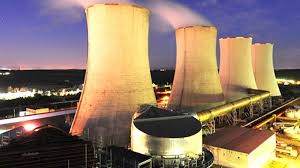Hwange Unit 7 clocks full load of 300MW
THE power utility, Zesa Holdings, has announced a reduction in load shedding in response to the rising domestic power generation capacity, which has seen the country surpassing 1 000MW total output from the lowest of about 300MW in February this year.
The jump in output follows the successful synchronisation and commissioning of the 300MW Hwange Power Station Unit 7 expansion project last month, among other Government interventions aimed at boosting power supplies.
The jump in power generation is expected to impact positively on the productive sector, which had complained over loss of production time due to prolonged power cuts, as well as ease the burden on household consumers while reducing imports.
Following the commissioning of Unit 7 Hwange Power Station, which at some point dropped to 74MW, the giant thermal station is now back on its feet, producing 506MW as of yesterday, with Kariba Hydro-Power Station generating 548MW, according to the Zimbabwe Power Company (ZPC).
With Munyati generating 13MW and Harare 12MW, the country was yesterday generating a combined output of 1079MW, a significant jump when compared to the last few months.
In an update yesterday, Zesa Holdings’ general manager responsible for stakeholder relations, communications and welfare, Dr George Manyaya, said the power supply situation was expected to further improve in light of the imminent commissioning of Unit 8, which will add another 300MW to the national grid.
The Second Republic led by President Mnangagwa has facilitated the implementation of the 600MW Hwange expansion project at a cost of US$1.5 billion through a Chinese loan deal.
“Zesa Holdings is pleased to advise its valued stakeholders of the improved power supply situation in the country, which has resulted in reduced load curtailment across most of our customer segments,” said Dr Manyaya.
“This achievement was a result of implementation of various measures and the stabilisation of performance of the Hwange Unit 7, which is undergoing commissioning tests and has been able to supply a full load of 300MW to the national grid in some instances.
“Barring unforeseen technical challenges, we expect the electricity supply situation to continuously improve as we ramp up generation at the Hwange Power Station.”
Following the successful synchronisation of Hwange Unit 7, Dr Manyaya said a lot of technical processes were being undertaken in preparation for the impending synchronisation of Hwange Unit 8, which will add 300MW.
Government through the Treasury has also been pumping significant resources toward upgrading the six old units at Hwange to give them a new lease of life. Efforts are also underway to rehabilitate the Bulawayo Thermal Power Station using funding support from India.
“Furthermore, we have been engaging with the Zambezi River Authority (ZRA) for more water allocation and we can confirm that we have been allowed to increase generation for limited periods,” he said.
Commenting on the power situation during a Smart Cities and Rural Connect Conference in Bulawayo yesterday, Energy and Power Development permanent secretary, Dr Gloria Magomba said Zimbabwe was taking all necessary steps, including harnessing renewable energy, to ensure speedy investments in new power projects buttress the country’s economic growth trajectory.
To that end, she said Zimbabwe was targeting generating 2 100MW of renewable energy alone by 2030, which will go a long way in easing the carbon footprint in the country’s energy mix in line with global climate change mitigation measures while also boosting total domestic output with a focus on exporting excess capacity.
In line with President Mnangagwa’s philosophy that ‘Ilizwe lakhiwa ngabaninilo’, she said local financiers, which include banks and private finance bodies, should come on board and help fund the development of new power projects.
“The Government has already pumped in about US$2 billion at Hwange in the past 10 years and we are calling upon local private players to complement the Government efforts and fund development projects,” she said.
Meanwhile, Dr Manyaya said pursuant to their notice on 19 April 2023, consumers were reminded that prepaid token purchase system will be unavailable from 5 May 2023 at 16.30hrs to 6 May 2023 at 24.00hrs to allow for scheduled major system maintenance.
“Consumers are encouraged to start purchasing sufficient electricity tokens to sustain them during the service disruption period,” he said.
“We would like to sincerely apologise to all our valued stakeholders for any inconveniences caused and assure that the utility remains alive to the need to guarantee power supply to the nation, and will harness all measures to mitigate the power deficit challenges, increase capacity and improve service delivery.”-chroniclle










